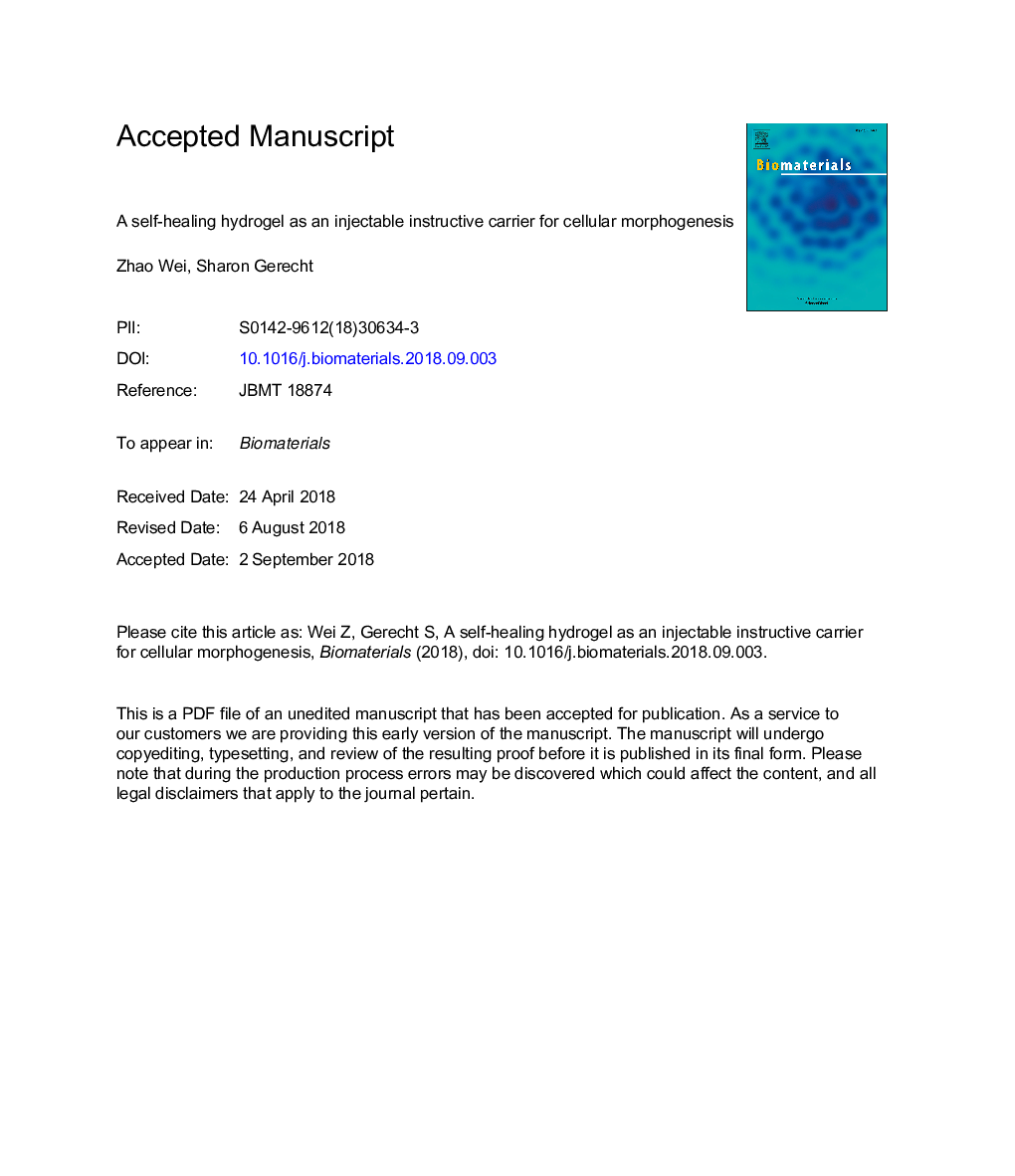| Article ID | Journal | Published Year | Pages | File Type |
|---|---|---|---|---|
| 10149913 | Biomaterials | 2018 | 42 Pages |
Abstract
Transplantation of progenitor cells can accelerate tissue healing and regenerative processes. Nonetheless, direct cell delivery fails to support survival of transplanted cells or long-term treatment of vascular related diseases due to compromised vasculature and tissue conditions. Using injectable hydrogels that cross-link in situ, could protect cells in vivo, but their sol-gel transition is time-dependent and difficult to precisely control. Hydrogels with self-healing properties are proposed to address these limitations, yet current self-healing hydrogels lack bio-functionality, hindering the morphogenesis of delivered cells into a tissue structure. Here we establish a gelatin (Gtn)-based self-healing hydrogel cross-linked by oxidized dextran (Odex) as an injectable carrier for delivery of endothelial progenitors. The dynamic imine cross-links between Gtn and Odex confer the self-healing ability to the Gtn-l-Odex hydrogels following syringe injection. The self-healing Gtn-l-Odex not only protects the progenitors from injected shear force but it also allows controllable spatial/temporal placement of the cells. Moreover, owing to the cell-adhesive and proteolytic sites of Gtn, the Gtn-l-Odex hydrogels support complex vascular network formation from the endothelial progenitors, both in vitro and in vivo. This is the first report of injectable, self-healing hydrogels with biological properties promoting vascular morphogenesis, which holds great promise for accelerating the success of regenerative therapies.
Related Topics
Physical Sciences and Engineering
Chemical Engineering
Bioengineering
Authors
Zhao Wei, Sharon Gerecht,
